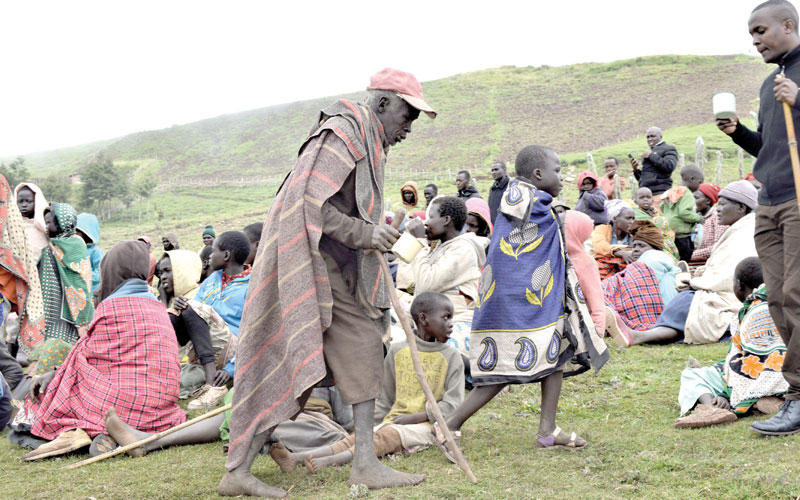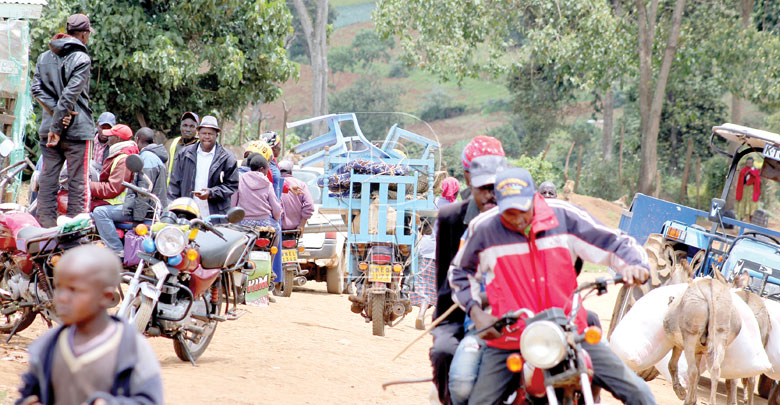Hope reigns supreme in gloomy 2019

Just like all countries around the world, Kenya is feeling the heat of a warming planet. Environmental impacts of climate change are happening at a scale that is affecting human life like never before. But amidst the gloom there are reasons to be hopeful. As the year comes to an end, here are some major conservation events that happened in 2019
Hope for the near extinct Northern White Rhino
The death of the only remaining male Northern White Rhino, Sudan, in 2018 spelt uncertainty to future survival of the subspecies.
By leaving behind only two female Northern White Rhinos, Najim and Fatu, with whose attempts to reproduce with Sudan failed; there was fear the critically endangered animals would go extinct.
But there is hope for the subspecies after successful artificial insemination of the eggs harvested from Najin and Fatu was successfully done by a group of scientists in August this year.
The seven eggs fertilised by frozen semen from dead Northern white rhino bulls, will be transferred to Southern White surrogates to halt the species extinction.
Ban on ivory trade upheld
The vulnerable African elephant’s survival received a boost after a global wildlife summit rejected proposal to loosen restrictions on ivory trade.
Zimbabwe, Namibia and Botswana had put forward a proposal during Convention on International Trade in Endangered Species of Wild Fauna and Flora (CITES) to be allowed to trade in ivory.
Zimbabwe, which has accumulated a large rhino and ivory stockpile estimated to be worth Sh61.7 billion, was lobbying for a one–off sale arguing the money would be used to fund conservation activities.
Kenya was among 32 countries opposed to lifting the ban on ivory trade, arguing it would stimulate demand of ivory and lead to massive poaching.
Efforts to protect the elephants also received a boost after a UK court upheld the ban on the trade on ivory in November.
Antique dealers had challenged the court to overturn a total ban on ivory introduced by the government through the 2018 Ivory Act.
Natural disasters claim over 100 lives
Several lives have been lost and property destroyed following ongoing heavy rains in the country. Floods caused by extreme weather conditions in many parts of the country have led to displacements and massive destruction of crops. 
A report by United Nation’s Intergovernmental Panel on Climate Change (IPCC) projects the country is likely to experience more extreme rainfall occurrences that may lead to flooding.
In the face of global warming, drought and floods are expected to increase in frequency, cause displacements and result in conflict for natural resources.
With continued greenhouse emissions, the report projects an increase in mean annual temperatures, erratic rainfall posing a threat to food security.
Increased reliance on renewable energy
Kenya’s bid to fully transition into renewable energy gained traction following the launch of Lake Turkana Wind power this year.
The largest wind power project in Africa has injected more than 1.2 million Kwh of clean energy into the national grid since 2018.
The wind farm of 365 turbines will reduce electricity costs and place the country on track in achieving its goal of transitioning 100 per cent into green energy by 2020. Currently, Kenya gets 70 per cent of its installed electricity capacity from renewable sources.
That figure is thrice the global average according to World Economic Forum. The country has invested heavily on geothermal energy, which supplies low cost electricity and causes less pollution.
In 2018, geothermal power generation grew by 31. 6 per cent, according to 2019 Economic Survey. Kenya is ranked as the 9th in the world in geothermal power generation by Renewables 2018 Global Status Report.
Mau Forest evictions
The decision to evict thousands of people who had encroached on Mau forest has been marred with controversy. 
Though largely politicised, the process was aimed at evicting people from the 988,000-acre complex and one of the five biggest water catchment areas in the country.
The forest, a source of several rivers, holds great ecological importance. The rivers support the Mara and Serengeti ecosystems and wildlife while others flow into Lake Victoria.
Although small-scale evictions have been ongoing, the government started the process of evicting about 60,000 people in September this year.
Encroachment of the forest has led to massive deforestation and is partly attributed to drying of rivers originating from the water tower.






